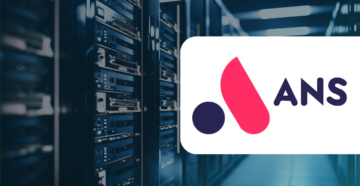Top 5 considerations before starting with AVD

Azure Virtual Desktop (AVD) is a great option for many but is not always easy to adopt right off the bat. But before the transition even begins, it is important to weigh the benefits of AVD and carefully consider why it is right for your organization, and what needs to be done before you switch.
Some of those considerations include aligning on responsibilities, understanding how applications and data will be handled in the new environment, and determining which outcomes you want to see from your move to AVD.
Worried you won’t be able to determine where to get started on even thinking about those steps? No worries, we’ve got you covered.
Determine responsibilities and resource availability
Used in this context, “resources” refers not to Azure resources like compute and storage, but to whomever is going to be involved and actively working on the project, or more precisely, who will be responsible for what? And do they have the right skillset to do what needs to be done?
In addition to the above, use these questions to drill down deeper when determining responsibility and resource availability:
- Who is in charge of building the new environment and/or writing proper documentation?
- Who will be testing applications?
- Who will be educating and onboarding users when their new workspace is ready for production?
- What will the process look like, is there a plan in place, and who’s responsible for that?
- Do we need additional staff to help with these tasks? And is there room in the budget to hire?
Of course, many of these responsibilities can be shared and it often happens that a single person oversees multiple. If that’s the case, that’s perfectly fine, as long as it is clear who is doing what and expectations have been set.
It’s important to clearly outline and assign responsibilities, and perhaps even more importantly, you need to make sure that the people involved have enough time reserved to spend on the tasks at hand. While the days and weeks pass, there will always be “fires” that need to put out, or other issues that deserve attention, meaning priorities might shift from time to time. However, by establishing a baseline it gives you something to fall back to, clearly communicates to everyone involved who to contact, call, email, etc, when they have questions, and helps hold the team accountable.
Team misalignment and misunderstanding are easily two of the top reasons projects take longer than necessary. By making sure people have time allocated to the actions they will be expected to incorporate into their role, it takes a lot of uncertainty away and will greatly enhance your chances of completing your project on time.
Set goals and success criteria
It’s also important to identify what you would like to achieve. Let me give you an example. When Nerdio Manager for Enterprise is installed, or better yet before the installation takes place, we always like to set up a meeting with the prospective customer and discuss what we refer to as “customer success criteria”.
The goal is to establish a clear picture of what the customer wants to achieve when leveraging Nerdio. While going through this exercise, assuming the correct people take part (who will be actively working on this project and have the time reserved to do so) you’ll notice that certain “critical needs,” or “want to have”s can be quite surprising. You may also discover certain “needs” that you may not have thought about before, prior to the POC.
This practice ensures customers will get the best out of our 30-day free trial. While this helps us, it is a huge advantage for the customer as well, as we have now set a common goal to work towards and we will make sure to do everything we can to achieve them within the given timeframe. This includes recurring meetings to align and go over questions, potential roadblocks, architectural reviews, health checks, etc. Of course, this approach can also be applied whenever a new technology is being considered or implemented.
On top of this, you want to establish how “success” is measured. Are we seeing the desired results defined by one metric? Does our environment have all the (automated) “critical” features we are interested in, and do they work as expected? What about costs, are they in line with what was projected? And more. This can be as detailed as desired depending on your needs and the size / scope of the project.
After the trial period expires, it’s time to wrap up and discuss the outcomes with your team and the users in the POC. Satisfied? Yes, good. Let’s review next steps and take it from there.
Application considerations
While this article is not meant as a complete technical reference, it’s important to highlight applications as it’s one of the most common challenges we see with companies interested in moving to the cloud.
Take the following actions when determining your strategy for migrating applications to AVD:
- Consider application compatibility. Switching platforms often means a change of the underlying operating system, so make sure you will not run into any surprises once users go live.
- Examine the number and types of applications involved. This metric can be helpful in determining how much time it will take to do proper testing. You may also want to consider which applications can be dropped or replaced with a SaaS alternative. Bear in mind, too, that certain applications could behave differently when they are run on a cloud based VM, meaning more or less compute resources might be needed.
- Examine application delivery and overall maintenance beforehand. Nerdio helps you discover applications installed on a host pool (image) and you can configure rules to decide which users can access which applications, while “masking” the rest of the applications from them. Multiple apps can be grouped together for consolidate access management.
Another option to leverage is some of the different “layering” solutions out there, like FlexApp One from Liquidware or MSIX AppAttach offered by Microsoft. And while we are not highlighting any specific testing methodologies, you might want to give our friends over at Rimo3 a visit, as application (compatibility) is their bread and butter.
- Think about how applications will be delivered to your users. Will applications be published (Remote App) or will you be offering a published desktop? Will users start their applications by clicking desktop icons as part of the start menu, or will they be using the AVD client exclusively? A combination of the above is also optional.
- Develop a strategy for ongoing management. Your base images will need to be updated from time to time; application and security updates will be factors, new applications may need to be added, security may need to be enhanced, and more. You can find more information on application management in this blog.
Data considerations
Besides applications, data can be a huge hurdle as well. As with applications, you want to make sure that the data used, never mind the type, is as close to your hosts (where the actual work is done) and users as possible. This eliminates part of any latency issues you may run into and makes sure users will have quick access to files and folders.
It is important to understand how much data you are dealing with and what it is used for. This will help with prioritizing the types of databases used currently and what will be used on Azure, and so on. The same will apply to where other data will be stored as well. Will you be using traditional file servers, or do you prefer a more flexible and scalable approach like Azure Files file share? Most opt for the latter.
This might also be a good time to think about archiving certain data, to clean things up a bit. As with the applications refresh cycle mentioned earlier, it will depend on the scope of the project and how much time and effort can be spend on this specific topic.
Once done, more technical research can be done regarding which method or tool best fits your approach and you will get a sense of how long it will take. Migrating data is always tricky since most data will be used “live” during the day meaning there will always be a delta of some sort which will need to be replicated at certain point. It’s a matter of finding the sweet spot and disabling access to the old environment.
Some other items to consider, these apply to applications as well as data, are:
- Are there any restrictions, legally why you might not be allowed to run certain applications and/or store the data in the public cloud?
- Are there any specific dependencies? Think about legacy on-prem applications using a dongle, for example. Are they dependent on other systems, databases, applications etc.?
- Are there any specific needs for encryption or authentication?
- Are there any specific networking requirements (or latency) that need to be taking into consideration? Remember that on-premisses is different from cloud. I/O could play a role here as well.
Educate and involve your users
This is easily a “must do” to increase your chances of success when it comes to the adoption of new technology.
Shifting to a new platform can be confusing for users. People tend to stick to what they know, and change is often seen as a bad or scary thing.
When things are about to change it helps to think about how you will “guide” and educate your users about what’s coming, what’s new, and most importantly, why the company chose to take this route. This often has to do with getting rid of legacy technology, making the platform more future proof, secure, and eventually easier to work with. Of course, that’s not how most of your users will see it, unless you explain it to them.
Think about training programs, explaining new ways of work, perhaps there will be new types of applications involved, a new way of logging into their systems in the morning, an interface they are not used to, etc. Try to focus on, or at least underline what’s in it for them, and how eventually it will make their lives easier and more efficient.
The sooner you involve your users, the greater acceptation will be. When users are involved early and are asked for their opinion and feedback, they feel like they have a say in how things will turn out. Organize sessions to explain some of the above topics so they know what is coming. Ask for their thoughts on the matter and what they think, if they have any suggestions, compared to how they work currently is there anything they like or feel needs improving, etc.
You could argue that the above, especially examining your current platform/infrastructure and the way users go about their daily routines should always be a part of any preparation phase when thinking about shifting to a new way of working. It’s probably where you’ll find answers to some of the most important questions when it comes to what needs to be done to improve and what has worked well over the years.
Conclusion
Azure Virtual Desktop is an incredibly useful and powerful tool and can be a huge asset to your business. However, making the switch to it can be complicated without the right steps set up in advance and the right people on board. Keeping in mind the above will ensure that you are putting your best foot forward when starting your AVD journey.
Think AVD may be right for your business? Nerdio can help. You can find more information on Azure Virtual Desktop here and begin a free trial here.


